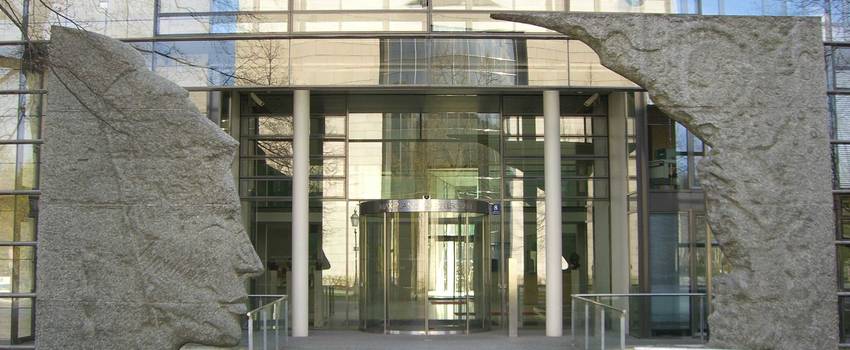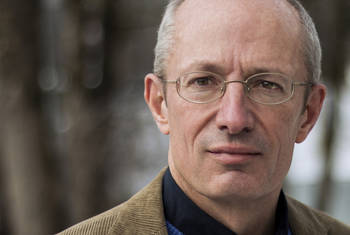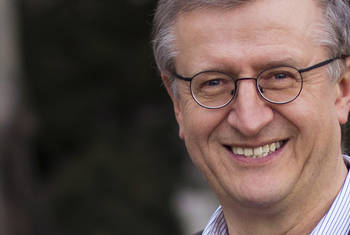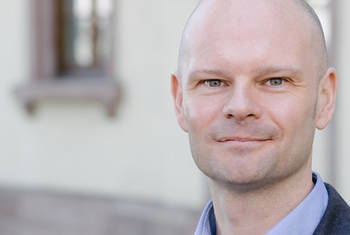Allen Caldwell How Can Plasma and Proton Beams Be Used in Building Next Generation Particle Accelerators?
Allen Caldwell is Director of the Max Planck Institute for Physics in Garching, Germany and spokesperson for the AWAKE project, a Proton-driven-plasma-wakefield experiment situated at CERN. Before joining the MPI, he spent 15 years at Columbia University researching proton structure and related topics and was the spokesperson for the ZEUS experiment at the electron-proton collider HERA at DESY (German Electron Synchrotron) in Hamburg, Germany. Caldwell is also Honorary Professor at the Technical University of Munich where he teaches courses in probability, statistics and data analysis techniques.
Area of Research
Particle Physics, Plasma Wakefield Acceleration
since 2012
Spokesperson
AWAKE Collaboration
since 2006
Honorary Professor
Technical University of Munich (Technische Universität München)
since 2002
2002-2003
Professor
Columbia University, New York
1999-2002
Director
Nevis Laboratory
1997-1999
Spokesperson
ZEUS Collaboration
1995-1997
Deputy Spokesperson
ZEUS Collaboration
1994-2002
Associate Professor
Columbia University, New York
1992-1993
Coordinator
Structure Function Group for ZEUS Experiment
1987-1989
Post Doctoral Research Scientist
Columbia University, New York
1987
PhD in Physics
University of Wisconsin-Madison
1981
Bachelor of Science
Rice University
Fellowships
- Chair, ATHENA Review Committee, DESY (2015)
- Member, LSC Director Search Committee (2015)
- Member, CJPL Scientific Advisory Committee (since 2014)
- Member, Financial Oversight Board, Belle-II Collaboration (since 2013)
- Supervisory Board, Semiconductor Laboratory of the Max Planck Society Member, IZEST Science Advisory Board (since 2012)
- Member, Perspectives Committee of the CPT Section, Max Planck Society (since 2012)
- Member, International Review Committee, Institute of Particle Physics (2012)
- Organizing Committee, Advanced Accelerator Concepts Workshop (2012)
- Visiting Committee for Scientific Programs, Fermi National (2011)
- Member, DUSEL Program Advisory Committee (since 2010)
- Chair, LHeC Scientific Advisory Committee (since 2008)
- Member, Electron-Ion Collider Advisory Committee (since 2008)
- Visiting Committee for Scientific Programs, Fermi National (2009)
- Review of the Nuclear Science Division, Lawrence Berkeley National Laboratory (2009)
- Review of Physics and Astronomy at University College, London (2009)
- Project Leader, 'Neutrinos and Beyond' for Sonderforschungsbereich of the DFG (2006-2011)
- Max Planck Research Groups Selection Committee (2005-2006, 2006-2007, 2009-2010)
- Chair, GERDA Collaboration Board (2004-2011)
- Member, Experimental Program Advisory Committee, Stanford Linear Accelerator Center (2002-2006)
- Fellow of the American Physical Society (2000)
- Alexander von Humboldt Fellowship (1995-1997)
Prizes
- Distinguished Alumnus Award, University of Wisconsin (2012)
 © Maximilian Dörrbecker
© Maximilian Dörrbecker
Max Planck Society
"The Max Planck Society is Germany's most successful research organization. Since its establishment in 1948, no fewer than 18 Nobel laureates have emerged from the ranks of its scientists, putting it on a par with the best and most prestigious research institutions worldwide. The more than 15,000 publications each year in internationally renowned scientific journals are proof of the outstanding research work conducted at Max Planck Institutes – and many of those articles are among the most-cited publications in the relevant field." (Source)
Institute
Max Planck Institute for Physics
"What gives matter its mass? This is one of the questions being investigated by scientists at the Max Planck Institute for Physics in Munich. They study the smallest building blocks of matter and how they interact with each other. The behaviour of these building blocks – the quarks, charged leptons and neutrinos – helps them to understand the origin of the universe and its present form. The Institute researchers conduct experiments at the largest particle physics laboratories around the world. These include CERN in Geneva, KEK in Tsukuba (Japan) and DESY in Hamburg. Moreover, they also perform experiments to investigate cosmic radiation on the Canary Island of La Palma and the neutrino experiment in the Gran Sasso underground laboratory in Italy. Theoreticians not only team up with the experimenters to jointly interpret the results of the experiments, but also to develop new theories in order to better characterise our universe." (Source)
Map
The greatest developments in particle physics have been achieved with the help of particle accelerators. To answer open questions on particles, even stronger accelerators are needed but conventional technology encounters limits. The new ‘plasma-wakefield acceleration’ technology is designed to build high performance accelerators that are more compact. As ALLEN CALDWELL explains, the basic idea is to generate a plasma wave that pushes the particles forward. As is shown in this video, energizing the plasma with a proton beam instead of a laser pulse allows to create an electric field of much longer distance.
LT Video Publication DOI: https://doi.org/10.21036/LTPUB10171
Proton-Driven Plasma-Wakefield Acceleration
- Allen Caldwell, Konstantin Lotov, Alexander Pukhov and Frank Simon
- Nature Physics
- Published in 2009









